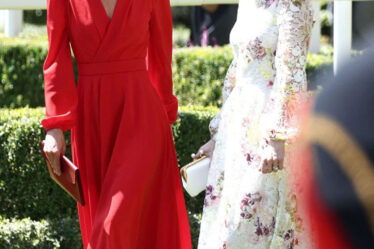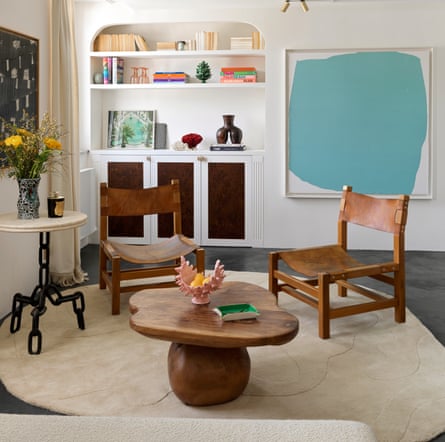
When interior designer Stéphan Bidoux first visited his apartment in Paris’s 10th arrondissement over a decade ago, it hadn’t been occupied for years. “It looked more or less as if it had been abandoned,” he recalls. “It was in a disastrous state, completely beaten up, with lots of things broken.” On the lower level were three tiny, separate rooms, which were not at all connected with the attic floor above. To see the latter, Bidoux had to pop his head through a trapdoor in the ceiling of the building’s communal landing.
Back then, Bidoux had only just embarked on a career in interiors (he’d previously been in marketing and advertising) and the work he did was largely architectural. He joined the two floors together, inserting a strikingly geometric steel staircase between the two. He also opened up the space almost completely. “I like it when there are as few constraints as possible,” he says. “That’s why I didn’t install either a handrail on the stairs or a guardrail on the mezzanine level.” The only space that is actually enclosed is the compact shower room. As for the aesthetic, it was deliberately a little rough and industrial-driven.
Bidoux lived there for two years, before moving on and lending the apartment to a friend for the next eight years. In 2021, life’s twists and turns brought him back, but before taking up residence again he decided to revamp the décor with help from his design partner, Julien Villeneuve. To date, the duo have largely focused on residential interiors in Paris, but now, they are starting to branch out further afield to Normandy and the Algarve.
For his own apartment, Bidoux enlisted Villeneuve as something of an aesthetic sounding board. “When you do something for yourself, there are many more possibilities than if you’re working for a client, who will point you in a certain direction,” he says. “So, it was great to get both Julien’s input and opinions.”

The compact flat bears many of the hallmarks of their style, which they like to describe as “a sort of laid-back elegance”. They love juxtaposing precious and more coarse materials, painting rooms in neutral tones and adding pops of colour through furniture, fabrics and accessories. And they adore integrating vintage items into their decorative schemes.
Perhaps the most conspicuous splash of opulence comes by way of the striking backsplash in the kitchen, which brings together two different marbles – an expressive band of Calacatta Violamarble, topped by a strip of Rosso Levanto that has been sculpted with a wave-like motif. “We both wanted something a little singular that would give some visual interest to the space,” says Bidoux. The window ledges have also been clad with Calacatta Viola – one of a number of aesthetic echoes throughout the apartment. The curtains underneath the countertop are made from an Australian wool and linen mix from Dedar Fabrics. The starting point for the colour palette, meanwhile, was the mint green top of the dining table, which Bidoux already owned. He decided to mix it with earthy terracotta tones and touches of pink.
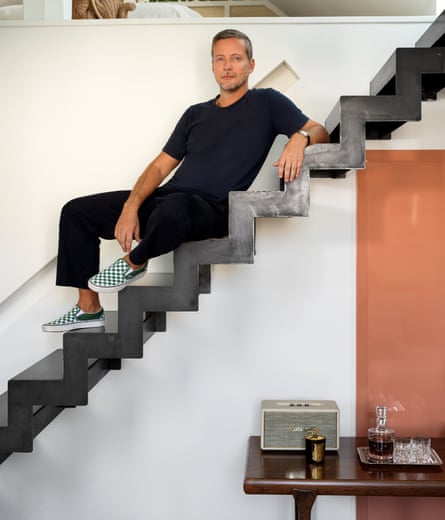
The most complicated zone to figure out was the corner situated directly underneath the stairs. “It was kind of dead,” says Bidoux, “and we had about 15,000 different ideas of how to enliven it, none of which really suited me.” For a while, they considered installing a folding screen, but ended up plumping for a series of salmon-toned lacquered panels. “The colour is quite theatrical,” he adds, “and the finish also has the advantage of reflecting sunlight.”
On the whole, the furnishings came together more easily. The one exception was the rug in the seating area. It took them a while to settle on the Gavrinis 3 model by legendary French designer Pierre Paulin, whose gentle curves contrast perfectly with the flat’s angular architecture.
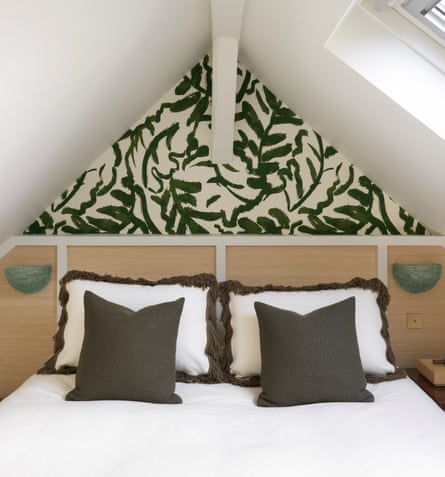
One material present in most of Bidoux and Villeneuve’s interiors is rattan – an element which, for them, conjures up images of up images of holidays in Italy. This flat is no exception. In the dining area, they chose a set of 1960s rattan chairs, which were re-upholstered in a surprisingly sumptuous hand-embroidered fabric from one of France’s most eminent textile houses, Pierre Frey. That dialogue between roughness and plushness is present throughout. The rope ceiling light – by Audoux Minet – in the dining area and the pair of 1960s safari-like leather and wood chairs in the seating area fall into the first category; the rosewood table under the stairs and the custom sofa (a Bidoux and Villeneuve design) with its lacquered, spherical feet into the second.
The bedroom on the mezzanine level, meanwhile, has a slightly tropical feel, thanks to the handpainted wallpaper with an oversized, naïve leaf motif from Zak+Fox. “We wanted something strong to give the space some presence,” explains Villeneuve. “It’s not because you’re under a sloping roof that you can’t make a statement.” A similar approach was adopted in the tiny shower room, where the ceiling was painted with stripes to striking effect. The vanity here is made from Rainforest Green marble and the taps are by Tapwell.
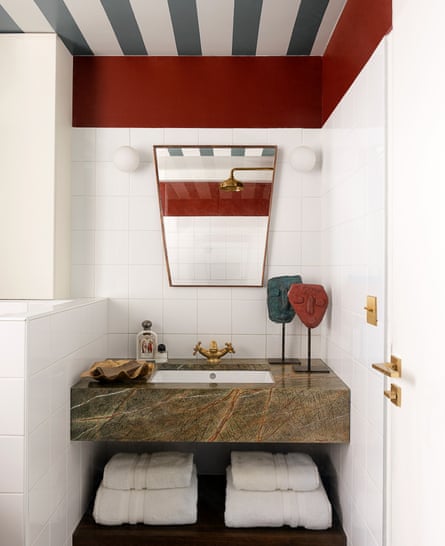
Both Bidoux and Villeneuve enjoy going out on something of a limb with artworks. “We don’t like them to be too matchy-matchy,” asserts Bidoux. “We like the idea that they can throw things off a little.” The large abstract painting by Christophe Bordarier in the living room is certainly an eyecatcher. But perhaps their favourite work is the small watercolour above the sofa of a boy by Canadian painter Kris Knight, which they found at an art fair in Paris. “If Stéphan hadn’t bought it for here, I’d have got it for my place,” says Villeneuve. “For both of us”, adds Bidoux, “c’était le crush!”

